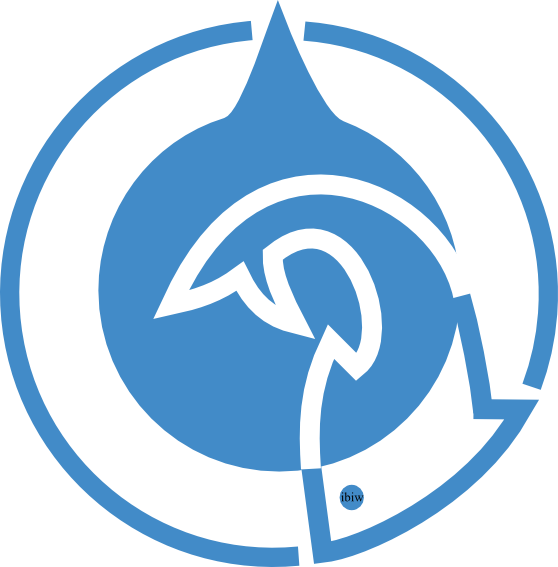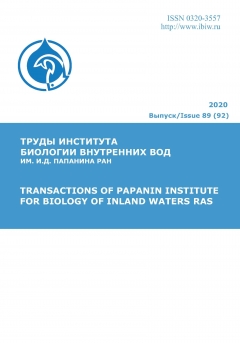An ecotoxicological assessment of the state of the Uva River in the influence zone of the dairy plant wastewater was given. Bioindication was carried out based on macrozoobenthos indicators. A total of 129 species and taxa of higher rank of macrozoobenthos were identified. In the area below the wastewater discharge, a sharp decrease in biodiversity and a decrease in the Shannon index, Pielu evenness, EPT, TBI and BMWP were noted. At the same time, an increase in the role of oligochaetes in the community (Goodnight-Whitley index) and a significant increase in the number (up to 40.5 thousand specimens/m2) and biomass of macrozoobenthos (up to 155 g/m2) were noted. The saprobity index values varied from 1.7 to 7.0. In the upper reaches, a β-mesosaprobic zone is formed, in the middle reaches, the saprobity index ranges from 1.89 to 7, which corresponds to the β-mesosaprobic, α-mesosaprobic and polysaprobic zones. In the lower reaches, the saprobity indices are restored to the β-mesosaprobic zone. Biotesting of aqueous extract of bottom sediments on luminescent bacteria using the Ecolum test system showed acute toxicity at two stations located below the wastewater discharge. An ecological disaster zone has been identified, which is formed below the discharge of wastewater from the dairy plant in the village of Uva and extends approximately 25 km downstream.
small rivers, macrozoobenthos, biodiagnostics, bioindication, biotesting, Udmurt Republic
1. Zabaluhina A.S. Othody — v delo // Molochnaya promyshlennost'. 1994. № 9. S. 11
2. Kovaleva O.V., Sannikova N.V., Shulepova O.V. Uroven' zagryaznennosti stochnyh vod molokopererabatyvayuschih predpriyatiy Tyumenskoy oblasti // Samarskiy nauchnyy vestnik. 2020. T. 9, № 1(30). S. 49–54. DOI:https://doi.org/10.24411/2309-4370-2020-11107.
3. Kurdin V.P. Klassifikaciya i raspredelenie gruntov Rybinskogo vodohranilischa // Tr. In-ta biologii vodohranilisch. 1959. Vyp. 1/4. S. 25–37.
4. Metodicheskie rekomendacii po sboru i obrabotke materialov pri gidrobiologicheskih issledovaniyah na presnovodnyh vodoemah. Zoobentos i ego produkciya. L.: GosNIORH, 1984. 51 s.
5. Semenov V.V., Lugovkin A.N. Ochistka stochnyh vod v molochnoy promyshlennosti // Molochnaya promyshlennost'. 2020. № 8. S. 26–29.
6. Sergeev V.I. Pischevaya i pererabatyvayuschaya promyshlennost' Rossiyskoy Federacii. M.: Agropromizdat, 2004. 225 s.
7. Udmurtskaya Respublika: Enciklopediya. Izhevsk: Izd-vo “Udmurtiya”, 2008. 768 s.
8. Federal'nyy zakon ot 10 yanvarya 2002 g. № 7-FZ “Ob ohrane okruzhayuschey sredy”. Stat'ya 59.
9. Shitikov V.K., Rozenberg G.S., Zinchenko T.D. Kolichestvennaya gidroekologiya: metody, kriterii, resheniya. Kn. 1. M.: Nauka, 2005. 281 s.
10. Scherbina G.H. Izmenenie vidovogo sostava i strukturno-funkcional'nyh harakteristik makrozoobentosa vodnyh ekosistem Severo-Zapada Rossii pod vliyaniem prirodnyh i antropogennyh faktorov: avtoreferat dis. ... doktora biologicheskih nauk. Sankt-Peterburg, 2009. 303 s.
11. Yanygina L.V. Zoobentos basseyna Verhney i Sredney Obi: vozdeystvie prirodnyh i antropogennyh faktorov: dissertaciya ... doktora biologicheskih nauk: 03.02.08. Vladivostok, 2014. 399 s.
12. Leeds-Harrison P.V., Quinton J.N., Walker M.J. Harrison K.S., Tyrrel S.F., Morris J., Mills H.T. Buffer Zones in headwater catchments // Report on MAFF/English Nature Buffer Zone Project CSA 2285. Cranfield University, Silsoe, UK, 1996. 22 p.
13. Plafkin J.L., Barbour M.T., Porter K.D., Stribling J.B. Rapid bioassessment protocols for use in streams and rivers: Benthic macroinvertebrates and fish // U.S. Environmental Protection Agency, Office of Water Regulations and Standards, Washington, D.C. EPA 440-4-89-001. 1989.
14. Woodowiiss F.S. The biological system of stream classification used by the Trent Board // Chem. and Ind. 1964. Vol. 11. P. 443–447.








